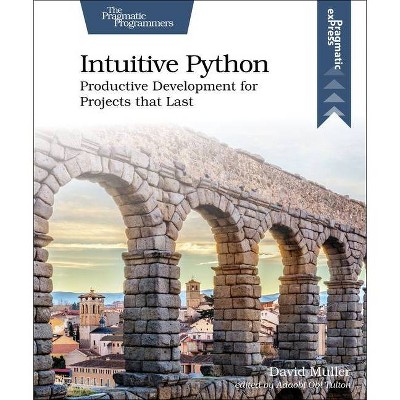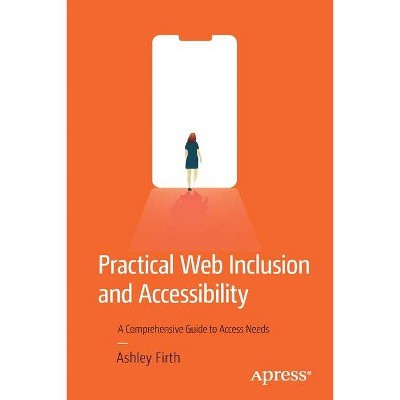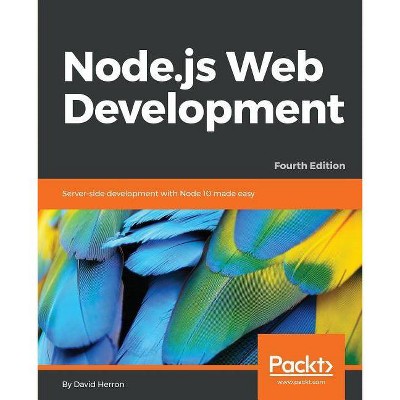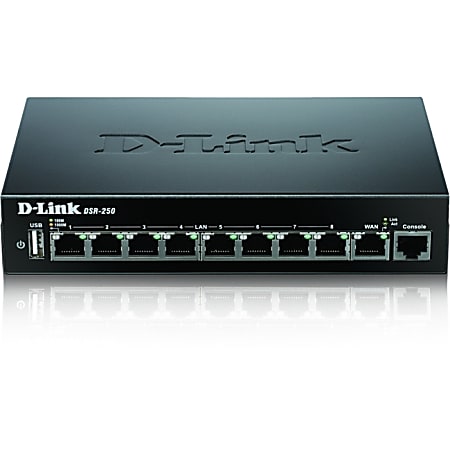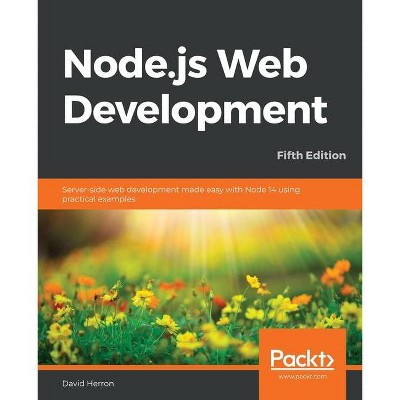Foundation Dynamic Web Pages with Python - by David Ashley (Paperback)

Similar Products
Products of same category from the store
AllProduct info
<p/><br></br><p><b> Book Synopsis </b></p></br></br>Chapter 1: Introduction to Web ServersChapter Goal: An introduction to web servers - specifically the Apache web server.No. of Pages: 5<br>Sub-Topics: <br>Glossary of termsIntroduction to the Apache web serverIntroduction to other web serversConfiguring your web serverOrganizing your web server<br>Chapter 2: HTML Pages and CSSChapter Goal: Describes the main principles of web pages and style sheetsNo. of Pages: 20<br>Sub-Topics: <br>HTML tagsOrganizing HTML sectionsLinking HTML pages to a style sheetCreating a library of partial HTML pagesEnsuring coordination between the HTML page, the CSS stylesheet, and you library<br>Chapter 3: Using CGI and PythonChapter Goal: Using Python to create an HTML page<br>No. of Pages: 25<br>Sub-Topics: <br>Configure CGI for use by PythonCreate a dummy page just for creating the layout of the page major elementsHTML sectionsUsing Python to create a dynamic HTML pageWhere to split a web page into multiple partsTechniques for managing the web page for use by PythonThe good and the bad of using CGI<br>Chapter 4: Using SSI and PythonChapter Goal: Configure Apache for use by SSI and Python<br>No. of Pages: 45<br>Sub-Topics: <br>Configure SSI for use by PythonCreate a dummy page just for creating the layout of the page major elementsHTML sectionsUsing SSI and Python to create a dynamic HTML pageWhere to split a web page into multiple partsTechniques for managing the web page for use by SSI and PythonThe good and the bad of using SSI<br>Chapter 5: Using Django and PythonChapter Goal: Using Django and Python to create an HTML page<br>No. of Pages: 40<br>Sub-Topics: <br>Configure Apache for use by Django and PythonCreate a dummy page just for creating the layout of the page major elementsHTML sectionsUsing Django and Python to create a dynamic HTML pageWhere to split a web page into multiple partsTechniques for managing the web page for use by Django and PythonThe good and the bad of using Django<br>Chapter 6: Using Flask and JinjaChapter Goal: Using Flask and Python to create an HTML page<br>No. of Pages: 40<br>Sub-Topics: <br>Configure Apache for use by Flask and PythonCreate a dummy page just for creating the layout of the page major elementsHTML sectionsUsing Flask and Python to create a dynamic HTML pageWhere to split a web page into multiple partsTechniques for managing the web page for use by Flask and PythonThe good and the bad of using Flask<br>Chapter 7: Comparing CGI, SSI, Django, and Flask Chapter Goal: Choosing the correct dynamic page creation system<br>No. of Pages: 50<br>Sub-Topics: <br>List the advantages of each systemList the disadvantages of each system <p/>Chapter 8: Usage Options - CGI, SSI, Django, and Flask Chapter Goal: Choosing the correct dynamic page creation systemNo. of Pages: 50Sub-Topics: Discuss options for using multiple systems<br>Some things to remember<br><p/><br></br><p><b> From the Back Cover </b></p></br></br>Discover the concepts of creating dynamic web pages (HTML) with Python. This book reviews several methods available to serve up dynamic HTML including CGI, SSI, Django, and Flask. <br>You will start by covering HTML pages and CSS in general and then move on to creating pages via CGI. It is easy to use and can serve as a foundation for the more advanced services available for launching dynamic web pages. Next you'll explore the SSI (Server Side Interface) method. This is a slightly more advanced interface included in mots web servers that adds functionality to modify static HTML pages to add such things as the current date or time, include additional HTML, and other features to a static web page before it is delivered to the user. <br>The book also covers some of the key the Django module features, which must be added to the web server. These features include creating dynamic web pages and calling a database to provide additional information to the web page. Lastly you will explore the Flask module. While it has limited functionality on its own, it provides a very flexible environment to create a self designed system for delivery of dynamic web pages.<br>By the time you finish this book, you will be able to choose the appropriate methodology for delivering dynamic information using fast HTML creation services.<br>You will: <br><ul><li>Use HTML pages and CSS together to control the style of your web site.</li><li>Install and configure SSI, Django, and Flask for Apache.</li><li>Create dynamic web pages using CGI and creating a library of partial HTML pages to use in this task.</li><li>Build dynamic web pages using SSI and auxiliary Python programs to enhance the SSI functionality.</li><li>Develop dynamic web pages using Django.</li></ul> <p/><p/><br></br><p><b> About the Author </b></p></br></br>W. David Ashley is a technical writer for SkillSoft where he specializes in open source, particularly Linux. As a member of the Linux Fedora documentation team he recently led the Libvert project documentation, and wrote the Python programs included with it. He has developed in 20 different programming languages during his 30 years as a software developer and IT consultant, including more than 18 years at IBM and 12 years with American Airlines.
Price History
Price Archive shows prices from various stores, lets you see history and find the cheapest. There is no actual sale on the website. For all support, inquiry and suggestion messagescommunication@pricearchive.us



